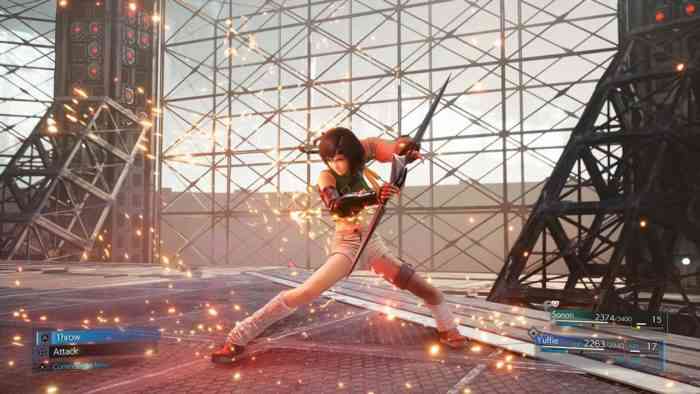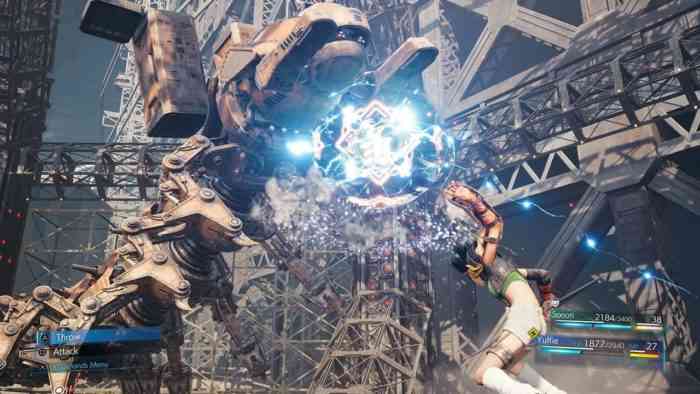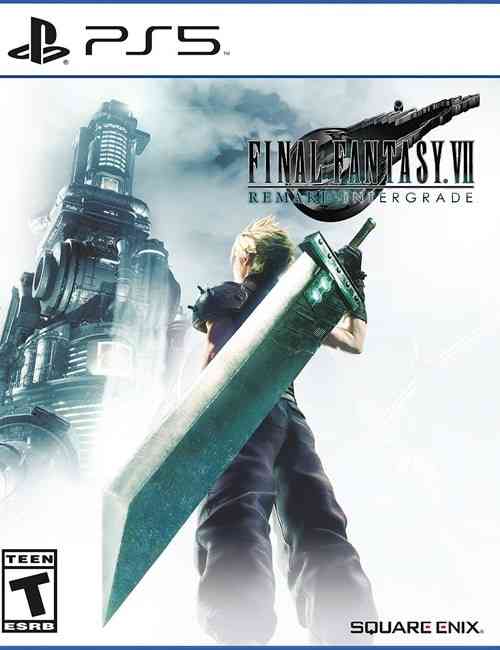Final Fantasy VII Remake Intergrade Review
The world holds its breath for the next real chapter in the Final Fantasy VII Remake saga. After the first game shook things up a bit story-wise, the wait seemed both eternal and unbearable. While Intergrade doesn’t really answer any of those burning questions, it is a brief, beautiful distraction from their constant presence.
There are two stories here. One is the same story, which I’m very familiar with and totally ready to repeat. Then there’s Yuffie’s tale. It’s a quick little jaunt through Midgar with a tone that’s slightly divested from the usual intense Final Fantasy fare. But only slightly! I genuinely teared up at the end, something I was absolutely not expecting. Also it’s tough, something I forget about Final Fantasy games every time I play them. But let’s get into those visuals for a minute.
A Very Different Game At 60 fps
Quality Mode and Performance Mode represent two distinct versions of this game. I’ve never noticed a difference this stark before. Quality means exquisite, distracting details at a jittery 30 fps. Performance means incredibly smooth animation in every scene, buffeted by most characters losing a little definition in the face region. Also the backgrounds and certain objects suffer a bit. Between the two, I found Performance Mode more tangible, more immediately satisfying. This is a PS4 game at its heart, after all. There’s only so much tweaking you can do to the original textures, whereas the framerate boost immediately propels Intergrade into next gen territory. There was some initial waffling on my preferred mode, but I landed on Performance more or less immediately.

Beyond the substantial technical tweaks, the base game is exactly as you remember it. My one grievance is that super detailed character models make simpler textures stand out more. Cloud and company are so crisp that a slightly low-rez wall chunk looks like a spotlight on a darkened stage. There’s just no missing these things, now. Performance Mode softens these contrasts while pulling your focus towards the animation. Focus is also an essential element of the combat in the DLC.
My earlier comment about the combat difficulty was incomplete. It’s not difficult as much as it’s deliberately designed. When you start out, you’re using Yuffie by herself. It’s not until Sonon joins that everything falls into place. Yuffie is designed to have a partner with her, you see. She’s a glass cannon with a melee focus. She needs someone there at all times, drawing enemies away. The whole Intermission combat system requires two characters to work. You even pick up piles of gear with this same focus in mind. Once the central conceit of the battles revealed itself, fights went from frustrating to fiendishly clever. Sonon is a terrific partner, with one exception: he doesn’t use revival items. Instead, he gives you all his remaining HP and dies. Ten out of ten otherwise.
The Phoenix Downs Are Just, Right There
Also ten out of ten? The new version of the Fort Condor minigame. I ripped through this game for review purposes, but Fort Condor requires a lot more attention. Like the original, you’re deploying troops to win a chunk of contested territory. Unlike the original, you’re deploying these troops in real time, through a modified version of the ATB system. You find out which matchups work and which don’t in short order, with most matches taking less than three minutes. The whole thing is terribly compelling. Finding new boards, buying new units, challenging new opponents, and coming up with new strategies should really be it’s own game. You hear that Square Enix? I will absolutely buy a retail version of Fort Condor.
—————————————————————————
BIG OL’ SPOILER WARNING
—————————————————————————
So Intermission’s story starts light? And it ends in a terrible tragedy. It also felt incredibly abrupt. I understand that this is a DLC sized adventure attached to a game that is itself a small chunk of a larger story. True resolution was never on the table. But it still felt like we were 60% of the way through the story before a major character dies and then credits and several cutscenes are happening. Also, there are two boss fights teased in the beginning. You get to one of them, while the other is tossed in chapter 17 of the main game. As optional content. It felt very rushed, is what I’m saying. On the other hand! One of the cutscenes makes it explicitly clear that (remember the spoiler tag?) Zack is super alive and somehow participating in the current narrative. While the end of Remake had some insane implications, this scene makes them feel like facts. First and foremost, it’s a fact that part 2 of Remake could go in literally any direction. They’re bringing people back from the dead! Possibly using time travel magic! Nothing is off the table!

Should you play this game? That depends. If you haven’t played Final Fantasy 7 Remake before this, you absolutely must. The PS5 version is the definitive way to do so. The upgraded framerate alone makes a strong case in Intergrade’s favor. Although if you already own the original, the upgrade isn’t new enough for a second playthrough. I’m playing it a second time, but you totally don’t have to. As for the Intermission DLC, it serves as an excellent appetizer while we wait for part two. By the time you’re done with Final Fantasy 7 Remake Intergrade, that wait will feel like an eternal one.
***A PS5 code was provided by the publisher***
The Good
- Performance Mode a game-changer
- Intermission feels fresh and original
- Fort Condor minigame is super rad
The Bad
- Quality Mode not as distinct
- Sonon can’t use phoenix downs?
- Ending is weirdly abrupt

